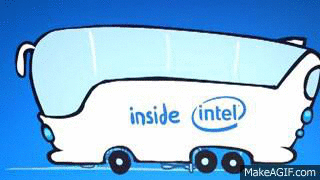-
Posts
39 -
Joined
-
Last visited
Reputation Activity
-
 Sol21 got a reaction from MoonDoggy-X in LTT Forums CPU Overclocking Database!
Sol21 got a reaction from MoonDoggy-X in LTT Forums CPU Overclocking Database!
Using CM EVO 212 Cooler - 1.129 Core Voltage @ 4.4ghz - This good OC? I started at 1.2 volt following Linus' video guide but temps were around 75ish so dropped it down and now average at 68.
EIST and C-States Disabled
I've also noticed that one of the cores is constantly 4-5C lower than the other 3. Possibly thermal paste not spread out?
I got BSOD after running 4 min of Prime 95 v26.6 @ 1.128 Core Voltage. Was curious if I should be worried that it's working fine so far with just 0.001 voltage increment up? In the BIOS I actually set it to 1.130 but seems like the programs are picking it up as 1.129.
I've been running Prime 95 for over an hour with the new voltage. Any suggestions on what I should do next to further check stability/thermal?
Should I go higher? I read it's not recommended to go beyond 4.4ghz with this cooler.
Also the CPU Cache Volt is set to auto in the BIOS, should I leave it be or change it? In AIDA64 it goes from 1.176 to 1.180 and back down.
Lastly, what should the adaptive offset be, 0.05? After I finish all my stress testing.
-
 Sol21 reacted to blackadder in Stable OC i5 4690k - Disable Adaptive, Leave C-State/EIST On?
Sol21 reacted to blackadder in Stable OC i5 4690k - Disable Adaptive, Leave C-State/EIST On?
i put my cache to 4.4, i have the exact same volts and speed. Anything under 1.2 is good. 1.25 is max normally for us -
 Sol21 reacted to runit3 in Stable OC i5 4690k - Disable Adaptive, Leave C-State/EIST On?
Sol21 reacted to runit3 in Stable OC i5 4690k - Disable Adaptive, Leave C-State/EIST On?
I've only found offset useful in max OC situations where you're teetering on a +100-200MHz bump and you need an extra bit of stability. A good explanation of what offset does, and how to use it, is here-> http://linustechtips.com/main/topic/187959-z97-adaptive-voltage-setting/
For adaptive voltage most boards handle it with a maximum value and it will determine the minimum voltage while in OS. Sometimes power balancing settings within Windows can screw this up and it will stay at manual values. Really hit and miss.
Since your voltage is relatively low, I would just leave it on manual @1.18v w/C-States enabled. Voltage does not equal wattage, you're only going to be drawing more power (wattage) under load.
-

-
 Sol21 reacted to ProKoN in Enable or Disable Turbo Boost for OC?
Sol21 reacted to ProKoN in Enable or Disable Turbo Boost for OC?
enabled for OC
with turbo boost enabled you will hit max core frequency
disable EIST if you dont want the cpu to downclock at idle
-
 Sol21 reacted to othertomperson in Enable or Disable Turbo Boost for OC?
Sol21 reacted to othertomperson in Enable or Disable Turbo Boost for OC?
"Turbo boost" normally refers to some cores clocking to a higher frequency when only those cores are being used. I would recommend you overclock all of your cores to some clock speed and keep Speed Step on do that you're not sitting at a ridiculous overclock when you're just running Chrome.
-
 Sol21 reacted to ProKoN in Enable or Disable Turbo Boost for OC?
Sol21 reacted to ProKoN in Enable or Disable Turbo Boost for OC?
there are 2 settings EIST and Turbo BOOST
to downclock while watching movies or browsing the web you must ENABLE EIST
to reach maximum turbo frequency you must ENABLE TURBO BOOST
-
 Sol21 reacted to Captain_WD in Windows 8.1 OS on SSD - Rest Into HDD - Required Drivers - BIOS Update - SSD Optimization - Much Questions
Sol21 reacted to Captain_WD in Windows 8.1 OS on SSD - Rest Into HDD - Required Drivers - BIOS Update - SSD Optimization - Much Questions
Hey Sol21, I would listen to what @Godlygamer23 suggested. Here are my thoughts on this: - A simple format should be sufficient-enough for everything. It basically deletes the partition table and your PC can no longer see the data on the drives and overwrites everything on top of your old data. You have this function in the Windows installer when you are aksed where to install the OS. For complete deletion of the data on the drives I would recommend "writing zeros" function of some software (WD Data Lifeguard Diagnostic should do the trick: http://products.wdc.com/support/kb.ashx?id=Te2veF ) for the HDD and some software with "secure erase" for the SSD (usually the manufacturer has this software so I'd check their website). This is if you really need to clean wipe your storage drives instead of simply formatting them. - I would also recommend creating a bootable thumb drive with the Windows installation files for a complete clean install. Here's a link on how to do this: https://www.microsoft.com/en-us/download/windows-usb-dvd-download-tool . This tool should walk you through the process of creating a bootable thumb drive for installing Windows. - Besides the default folders that @Godlygamer23 mentioned, you can also look into moving the pagefile and hiberfil files onto the HDD, play with their sized or disable them. This should free a decent amount of space on your SSD. - Windows Update function should provide pretty much everything you need for your system. If something isn't working properly, I'd check the latest updates in the motherboard's manufacturer website or the specific hardware part's website. Do make sure you choose the proper OS for the updates. - Usually the tools provided by the motherboard are not essential, but are useful and can improve the whole system's performance. If you have doubts about them, I'd drop an e-mail to the support of the motherboard's manufacturer, they should provide you with some good explanations. - For the HDD I'd simply use it as it is, check its S.M.A.R.T. status every once in a while and occasionally check if it's fragmented. For the SSD simply make sure TRIM is enabled, also check the S.M.A.R.T. status and never defragment it (it would degrade the health of the drive). The OS should take care of everything else. Captain_WD. -
 Sol21 reacted to Captain_WD in HDD Loud - Fractal R5
Sol21 reacted to Captain_WD in HDD Loud - Fractal R5
Those sounds are probably coming from the drive accessing its data when it's needed. If the drive passes the WD Data Lifeguard Diagnostic tool check it should be safe to use and its health should be fine. When the drive hasn't been accessed for a while it parks its read/write head away from the platter to avoid damage in case of vibrations or power outage and a bit later it spins down the platter itself. When there's a new request to the drive, it spins up quite quickly and moves the head over the platter. This causes the largest amount of noise from a drive. If you believe the drive is too loud, I'd check with the place where you got it from and try another one and see if it works more quiet and possibly RMA your current one. Captain_WD. -
 Sol21 reacted to Captain_WD in HDD Loud - Fractal R5
Sol21 reacted to Captain_WD in HDD Loud - Fractal R5
Hey Sol21, I would check the drive with WD Data Lifeguard Diagnostic tool to make sure its health is OK and it's safe to store your data on it. Here's a link: http://products.wdc.com/support/kb.ashx?id=5M9Axn If the tool reports the drive as OK, it should be safe to use. If you still think it is too loud, you can always test in outside the case and in another computer to make sure the sound is actually coming from the drive and not from vibrations caused by the case or the mounting. You could also contact our live support and possibly RMA the drive: http://products.wdc.com/support/kb.ashx?id=SFlJwi Captain_WD. -
 Sol21 reacted to dfsdfgfkjsefoiqzemnd in New build fan config?
Sol21 reacted to dfsdfgfkjsefoiqzemnd in New build fan config?
My drive cages are full, so I had to leave them in place. Removing one will help a lot.




